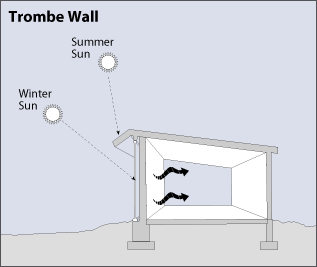Passive solar technologies have been used to regulate temperatures since the days of early man. In the past, these techniques were used out of necessity due to the lack of current technology. Now, passive solar designs are environmentally friendly and cost effective solutions to modern heating, cooling, and lighting techniques.
So what are passive solar designs? The idea of passive solar designs is that the energy from the sun will provide heating, cooling, and light for a desired environment. Simple designs are common for passive solar, as most designs revolve around windows, shade, angles, and materials. For the most part, the designs do not move and have no mechanically powered equipment at all.
The design can begin with the orientation of the building. The ideal configuration includes elongated N-S walls, with the building facing as close to true south as possible. Overhangs can be designed to block the sunlight from entering the home on the hottest day of the year, but will allow that sun to heat the space during the coldest. Ample south-facing windows can be used to naturally light the space. All these techniques help reduce the requirement for HVAC and electrical lighting.
One technique of using passive solar energy is Trombe walls. Trombe walls are sun-facing walls that contain multiple layers of vents and insulation, effectively acting as a solar thermal collector. These walls can be made of stone, concrete, adobe, or water-tanks. Instead of vents, there can also be water pipes included in the walls to produce a solar hot water system.
Almost any physical object that can be used as a solar thermal collector and is exposed to the sun can be used for passive solar energy collecting.


Recent Comments